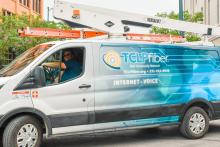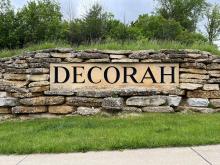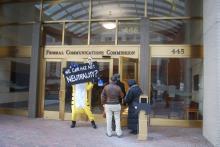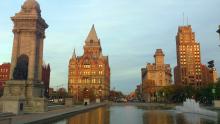
Syracuse officials have launched a new wireless community broadband network they hope will help bring affordable broadband access to the city of 145,000.
Dubbed Surge Link, the effort is backed by more than $3.5 million in federal funding and aims to deliver free broadband access to the city’s lowest income neighborhoods.
Motivated by peak pandemic connectivity headaches, Syracuse put out a request for proposal (RFP) late last year. The city then hired US Ignite as an advisor, and selected Geneva-based Community Broadband Networks (no relation to our program here at ILSR) to build a fixed wireless network capable of delivering discounted access starting with 2,500 underserved Syracuse households.
City officials tell ILSR the network is using Fixed Wireless Access technology, specifically Citizens Broadband Radio Service (CBRS), which is an emerging technology a growing number of municipalities and other nonprofit community groups have been experimenting with as a way to bring broadband to unserved and underserved residents in dense settings. And while CBRS has promise, as US Ignite notes, “because the technology is relatively new, the hardware and software associated with CBRS networks is also new. Vendors may still be working out the kinks in their solutions, particularly if those solutions are being used in novel ways, or need to interface with other older systems.”
It should also be noted that another New York community (Westchester County) embraced CBRS, only to find that it could not deliver the capacity they wanted to many people who needed the service.

However, Brooke Schneider, the city’s Senior Information Officer, told ILSR that Syracuse zeroed in on CBRS, in part, because “Fixed Wireless Access technology provides a quick time to market.”
To move things along, CBN received $3.5 million in American Recovery Plan Act (ARPA) funding to construct the network, which is currently in a pilot phase delivering symmetrical 100 Mbps (megabits per second) wirelessly to 10 census tracts on the south, southwest and west side of the city.
“As of Friday, October 6th, Surge Link already has 41 active subscribers and 369 pending installations since opening enrollment on Oct 2nd,” Schneider said.
Standard pricing is $40, though once Affordable Connectivity Plan (ACP) benefits are applied, qualified users can get access to 100 Mbps at almost no cost.
“Ensuring access to and affordability of Surge Link is core to our mission,” Schneider said, adding that the city is “offering direct assistance to help enroll subscribers for Surge Link and the Affordable Connectivity Program together via a single process.”
ACP Critical for City Program
But the ACP program is expected to run out of funding by the summer of 2024 at current funding levels, even as the program is currently at the center of an ongoing political debate over whether it should be renewed.
When asked what the city will do if ACP funding is not replenished, Schneider said:
“We are actively monitoring the status of the Affordable Connectivity Program and advocating with our representatives to emphasize how critical this program is for digital equity. In the event funds are not replenished, the City of Syracuse will use ARPA funds to subsidize the service to an affordable price.”
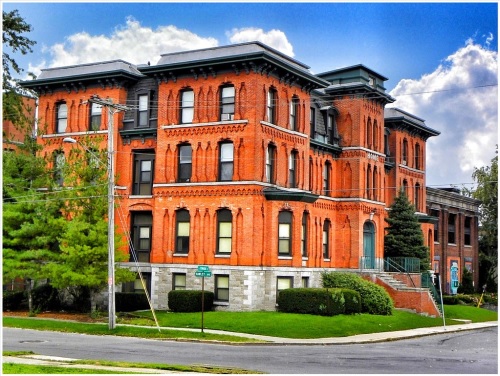
Qualified Surge Link users, who enroll at the Surge Link website, can also receive a one-time discount of up to $100 to purchase a laptop, desktop, or tablet.
To qualify, enrollees must have already qualified for SNAP, Medicaid, WIC, SSI, Veterans Pension and Survivor Benefit, Lifeline, or Federal Housing assistance, been approved to receive benefits under the free/reduced-price school lunch program or breakfast program, have a household income that is at or below 200% of the Federal Poverty Guidelines, or received a Federal Pell Grant during the current award year.
The Surge Link network is part of the city’s broader Syracuse Surge economic revitalization effort first launched in 2019.
In addition to the new wireless network, the city’s digital empowerment program has provided free technology training to more than 400 residents. Syracuse received $123 million in ARPA funding for city revitalization efforts.
“Now that Syracuse has launched this hybrid public-private broadband initiative, we look forward to collecting and sharing the lessons learned with our network of smart communities across the globe,” US Ignite said in a statement.
Regional Monopolies Struggle To Meet Market Demand
Roughly a quarter of Syracuse residents lack access to broadband at home, either due to a lack of availability or high cost. Like so many markets, Syracuse is largely dominated by a monopoly or duopoly of Charter (Spectrum) or Verizon, the latter of which has been under longstanding criticism for failing to consistently upgrade aging DSL to fiber.
While Verizon recently struck an $18 million public-private partnership to shore up access to fiber across 1,500 locations in Onondaga County (leveraging $11.1 million in ARPA funding), Verizon’s lack of timely updates across vast parts of New York State (including New York City) has been a point of contention for the better part of the last decade.

“Limited access to reliable, affordable internet service deprives children from learning opportunities, and minimizes access to jobs, healthcare and other online services that many of us take for granted,” Syracuse Mayor Walsh said at the Surge link launch event. “Without closing the digital divide that plagues lower income neighborhoods, we can’t achieve our Syracuse Surge goal of inclusive growth in the New Economy.”
The lack of meaningful competition routinely results in spotty broadband access, high prices, slow speeds, and substandard customer service across New York. In 2019 Charter was almost kicked out of New York state by the Public Service Commission due to poor service and repeatedly misleading regulators about the status of promised broadband deployments.
Last year, a joint investigation by The Markup and The Associated Press found that not only did companies like Verizon routinely avoid upgrading lower income minority neighborhoods (a practice dubbed “digital discrimination"), they consistently charge lower income and minority communities significantly more money for slower service than residents of more affluent markets.
A 2018 whitepaper by the National Digital Inclusion Alliance (NDIA) found that companies like Charter and Verizon routinely engage in “tier flattening,” or the act of gradually eliminating more affordable tiers in order to drive users to more expensive options. Meanwhile, a 2021 study by the Pew Research Center found that 43 percent of low-income adults do not have home broadband services.
And while programs like the ACP have helped, here too companies like Verizon were caught repeatedly exploiting program rules to either drive users to more expensive service tiers, or to glean taxpayer subsidies for users they weren’t actually providing service to.
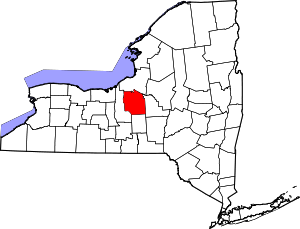
In New York state, like most of the U.S., data on broadband is still likely to be overly optimistic due to the longstanding flaws in the way federal policymakers map access. Only within the last few years have federal policymakers begun fixing broadband mapping problems, while shifting policy goals to have a sharper focus on affordability.
“Every household should have access to affordable broadband solutions that meet their needs,” NDIA Executive Director Angela Siefer said of the Syracuse launch in a statement. “Technology access and use is no longer a luxury. It is now a necessity to live, learn, work, and thrive. Kudos to the City of Syracuse for prioritizing digital equity.”
Plenty Of Work Left To Do

The plan to deliver wireless to 2,500 low-income Syracuse residents is only the first step, and puts just a small dent in a much larger problem. CBN’s current deployment is only a three-year test pilot, after which Syracuse leaders say that US Ignite will advise the city on the best path forward as they contemplate a network expansion and how to best fund it.
While Surge Link will certainly help low-income Syracuse residents, the program provides few solutions for users who don’t qualify and remain trapped between two disinterested monopolies with a history of price hikes and substandard service.
Similarly, questions remain as to how the city will fund an expansion of the existing fixed wireless network once ARPA and ACP funding is depleted. But for now, the network should provide immediate relief for those stuck on the wrong side of the affordability gap.
“Surge Link will change people’s lives for the better now,” Mayor Walsh said. “We will actively be evaluating this pilot and look forward to expanding the service in the future to provide affordable, high-speed internet to underserved households in other Syracuse neighborhoods.”
Header image courtesy of Wikimedia Commons, Attribution-ShareAlike 3.0 Unported
Inline image of Frederick Douglas painting on South Salinas Street courtesy of Flickr user Wally Gobetz, Attribution-NonCommercial-NoDerivs 2.0 Generic


